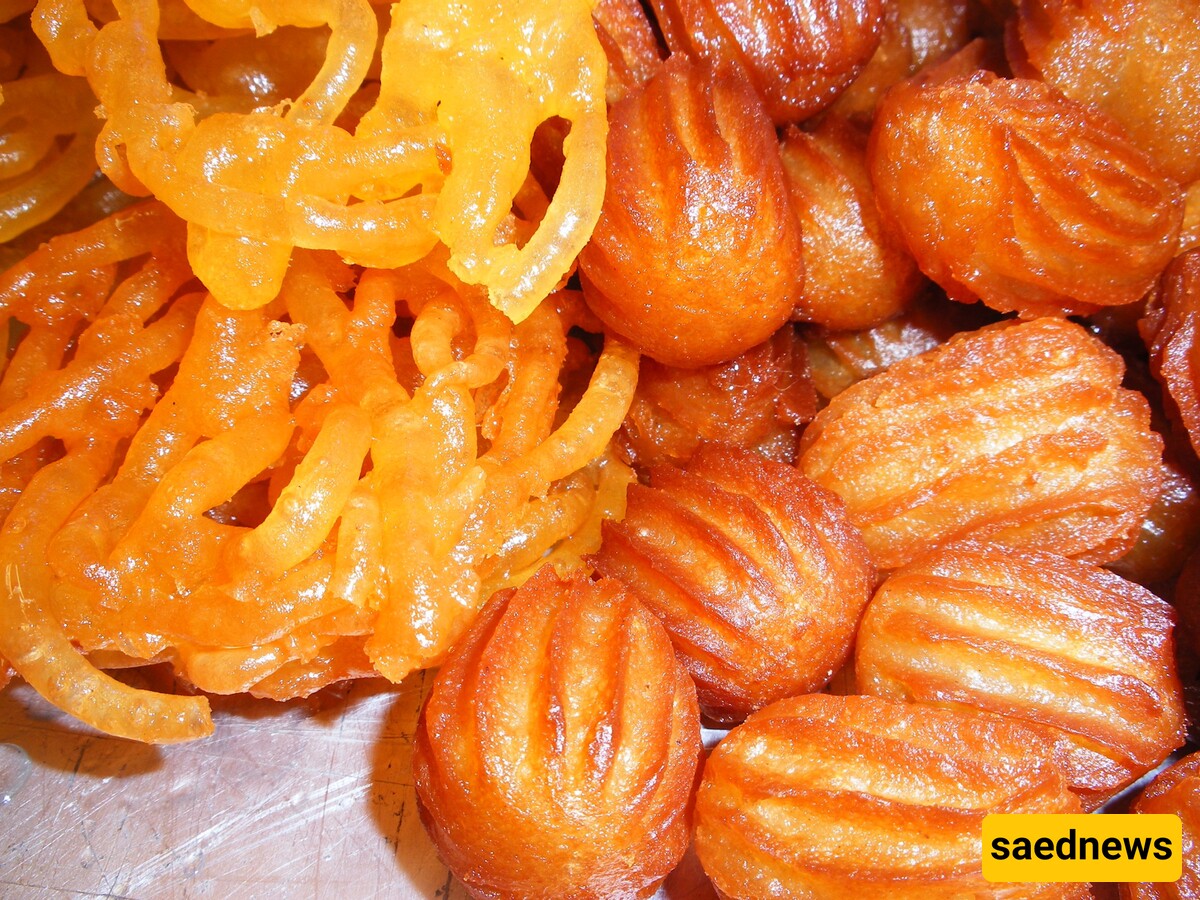SAEDNEWS: The name "Zulbia," this crispy and delightful dessert, originates from the term zulf-e-yaar (the beloved's locks), as its intertwined strands resemble flowing locks of hair. Follow this guide to prepare Zulbia at home, especially during Ramadan, and delight your loved ones.

Zulbia is a sweet that is soaked in syrup and is often served alongside Bamiyeh during Ramadan, making it a popular addition to Iftar tables. Though widely available in bakeries, homemade Zulbia is cherished for its unique flavor and texture. Traditional recipes often include yogurt and starch, but this recipe offers an alternative, showing you how to make Zulbia without them.
Water: 1 cup
Flour: 1 cup
Baking powder: 1 tablespoon
Thick saffron syrup: 1/4 cup
Water: 1 cup
Sugar: 2 cups
Rosewater: 2 tablespoons
Glucose syrup: 2 tablespoons
Thick saffron syrup: 2 tablespoons
Citric acid (or lemon juice): 1/4 teaspoon
Pour the water into a saucepan and bring it to a boil.
Add sugar without stirring and allow it to dissolve completely as it boils.
Once dissolved, add the citric acid, thick saffron syrup, glucose syrup, and rosewater. Stir until combined.
Let the syrup thicken slightly, then remove it from heat and let it cool.
In a bowl, mix the flour, water, and baking powder until smooth, with a consistency resembling thin yogurt. Adjust the water quantity as needed by adding it spoon by spoon.
Add the thick saffron syrup to the mixture and stir. Let the batter rest at room temperature for 15 minutes.
Transfer the batter into a piping bag, sauce dispenser, or disposable piping bag with the tip snipped off.
Heat oil in a pan until warm but not smoking. Reduce the heat to medium.
Pipe the batter into the oil in decorative swirls, ensuring each Zulbia holds its shape.
Fry for 15 seconds on each side until golden and crispy.
Immediately transfer the fried Zulbia into the syrup for about 20 seconds, allowing it to soak.
Place the Zulbia on a sieve or cooling rack to remove excess syrup. Sprinkle with pistachio powder if desired and serve.
The syrup should be lukewarm, as cold syrup can cause the Zulbia to crack, and hot syrup may make it soggy.
Be generous with saffron to achieve a vibrant color. You may also add a small amount of yellow food coloring if desired.
Ensure the piping tip is not too narrow; otherwise, the Zulbia will be too thin and won’t puff properly.
Maintain medium heat for even frying.
Pastry flour: 1 1/2 cups (200 grams)
Lukewarm water: 1 1/4 cups (250 grams)
Baking powder: 1 teaspoon
Vegetable oil: 1 teaspoon
Sugar: 1 teaspoon
Yeast: 1/2 teaspoon
Cornstarch: 1 tablespoon
Zulbia syrup: As needed
Mix half a cup of water with sugar and yeast. Let it rest for 10 minutes to activate.
Sift the flour and cornstarch together. Mix the dry ingredients with the remaining water and activated yeast.
Add vegetable oil and mix until smooth, with a consistency like stirred yogurt. Cover and let the batter rest at room temperature for 1 hour until bubbles form.
Refrigerate the batter for 15–20 minutes.
Heat 2 inches of oil in a pan, then reduce the heat. Pipe the batter into the oil in a lattice pattern and fry until golden.
Transfer to warm syrup briefly, then drain excess syrup on a wire rack.
After preparing all Zulbia, allow them to sit in an open container for 3–4 hours before sealing the lid. This helps maintain their crisp texture.

